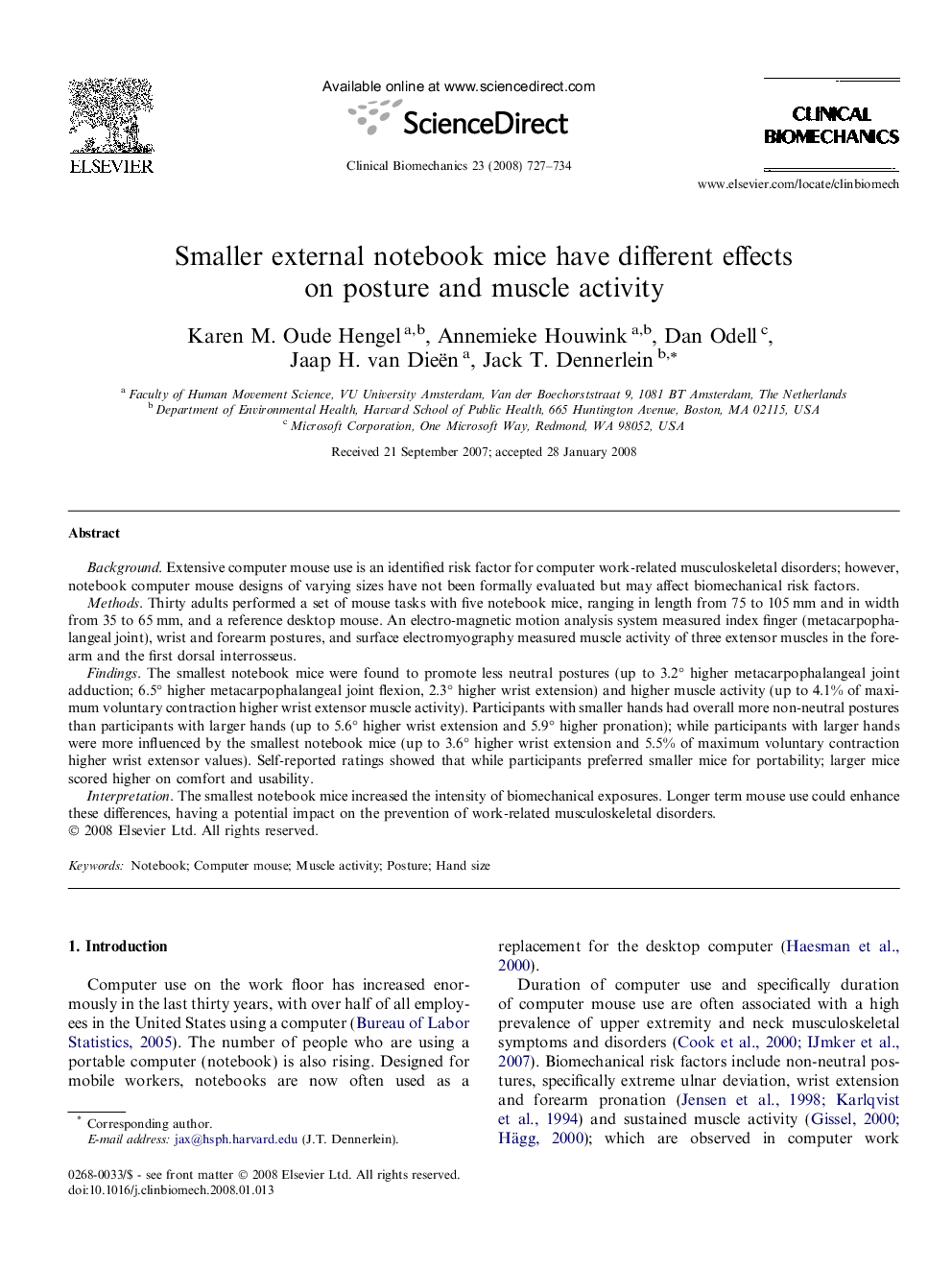| Article ID | Journal | Published Year | Pages | File Type |
|---|---|---|---|---|
| 4051078 | Clinical Biomechanics | 2008 | 8 Pages |
Background. Extensive computer mouse use is an identified risk factor for computer work-related musculoskeletal disorders; however, notebook computer mouse designs of varying sizes have not been formally evaluated but may affect biomechanical risk factors.Methods. Thirty adults performed a set of mouse tasks with five notebook mice, ranging in length from 75 to 105 mm and in width from 35 to 65 mm, and a reference desktop mouse. An electro-magnetic motion analysis system measured index finger (metacarpophalangeal joint), wrist and forearm postures, and surface electromyography measured muscle activity of three extensor muscles in the forearm and the first dorsal interrosseus.Findings. The smallest notebook mice were found to promote less neutral postures (up to 3.2° higher metacarpophalangeal joint adduction; 6.5° higher metacarpophalangeal joint flexion, 2.3° higher wrist extension) and higher muscle activity (up to 4.1% of maximum voluntary contraction higher wrist extensor muscle activity). Participants with smaller hands had overall more non-neutral postures than participants with larger hands (up to 5.6° higher wrist extension and 5.9° higher pronation); while participants with larger hands were more influenced by the smallest notebook mice (up to 3.6° higher wrist extension and 5.5% of maximum voluntary contraction higher wrist extensor values). Self-reported ratings showed that while participants preferred smaller mice for portability; larger mice scored higher on comfort and usability.Interpretation. The smallest notebook mice increased the intensity of biomechanical exposures. Longer term mouse use could enhance these differences, having a potential impact on the prevention of work-related musculoskeletal disorders.
